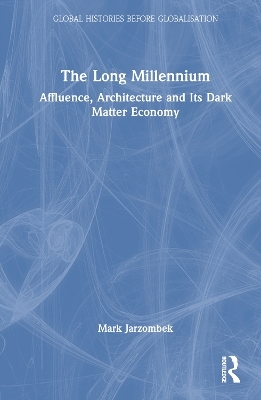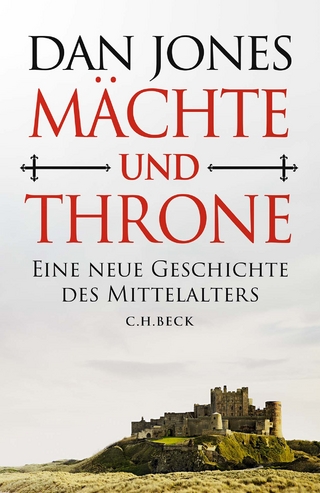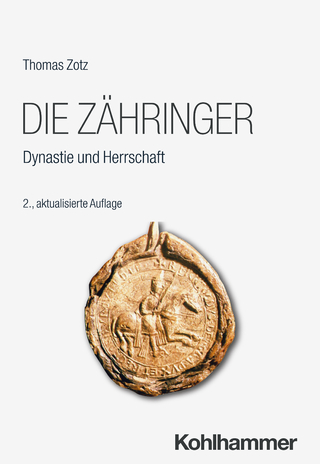
The Long Millennium
Routledge (Verlag)
978-1-032-24414-3 (ISBN)
- Titel z.Zt. nicht lieferbar
- Versandkostenfrei innerhalb Deutschlands
- Auch auf Rechnung
- Verfügbarkeit in der Filiale vor Ort prüfen
- Artikel merken
This book argues that long-distance trade in luxury items – such as diamonds, gold, cinnamon, scented woods, ivory and pearls, all of which require little overhead in their acquisition and were relatively easy to transport – played a foundational role in the creation of what we would call "global trade" in the first millennium CE. The book coins the term "dark matter economy" to better describe this complex – though mostly invisible – relationship to normative realities.
The first full integration of dark matter economy with the emerging global flows took place in South India and Sri Lanka at the beginning of the millennium. The book then moves to other places in the world – "sweet spots" – where a particular type of affluence was generated through the trade in luxury goods. This upstream affluence manifested itself in the creation of shrines, palaces, temples and engineering works that all thickened the landscape of memory, control and extraction and also served as a defense mechanism against intrusions from afar. The book also explains the collapse of dark matter economy as a result of the cumulative energies of colonialism, modernization and nationalism that make it hard for us today to come to terms with this history.
The Long Millennium will appeal to students and scholars alike studying the trade networks and economics of the early Middle Ages as well as anyone interested in the effect of trade on medieval society in the first millennium CE.
Mark Jarzombek is Professor of the History and Theory of Architecture in the Department of Architecture at MIT. In addition to his numerous articles and other works, he has published two textbooks: A Global History of Architecture with co-author Vikramaditya Prakash (2017) and Architecture of First Societies, a Global Perspective (2014). In 2013, Jarzombek and Prakash founded the Global Architectural History Teaching Collaborative (GAHTC) through a multimillion dollar grant from the Andrew W. Mellon Foundation. It supports scholars from around the world who are committed to infusing a global perspective into their academic and teaching practices.
Introduction: Leading Questions
Part 1
The Case of Musa I
Dark Matter Affluence and Sweet Spot Systems
Cross-Ecological Delivery Economies
Part 2
"The Most Outlying Lands"
The Sri Lanka Wealth Rush
South Indian Emergence
The Central Role of Borneo
The Indonesian Seaway
The Sub-Himalayan – Yungui Plateau Sweet Spot
The East Africa Coastal Sweet Spot
The North Sea Lattitude Sweet Spot
Part 3
Beyond the Binary
Structural Assymetries
Institutions Without Institutionality
Crossing Chieftain Geographies
Part 4
Shrine Landscapes
Feast and Dance
Great Works
Palace Universes
Looking and Sounding the Part
Coda: Death by a Thousand Cuts
| Erscheinungsdatum | 05.12.2023 |
|---|---|
| Reihe/Serie | Global Histories Before Globalisation |
| Zusatzinfo | 170 Halftones, color; 170 Illustrations, color |
| Verlagsort | London |
| Sprache | englisch |
| Maße | 156 x 234 mm |
| Gewicht | 780 g |
| Themenwelt | Geschichte ► Allgemeine Geschichte ► Mittelalter |
| Geschichte ► Allgemeine Geschichte ► Neuzeit (bis 1918) | |
| Geschichte ► Teilgebiete der Geschichte ► Wirtschaftsgeschichte | |
| Naturwissenschaften ► Biologie ► Ökologie / Naturschutz | |
| Sozialwissenschaften | |
| Wirtschaft ► Volkswirtschaftslehre ► Makroökonomie | |
| ISBN-10 | 1-032-24414-3 / 1032244143 |
| ISBN-13 | 978-1-032-24414-3 / 9781032244143 |
| Zustand | Neuware |
| Informationen gemäß Produktsicherheitsverordnung (GPSR) | |
| Haben Sie eine Frage zum Produkt? |
aus dem Bereich


